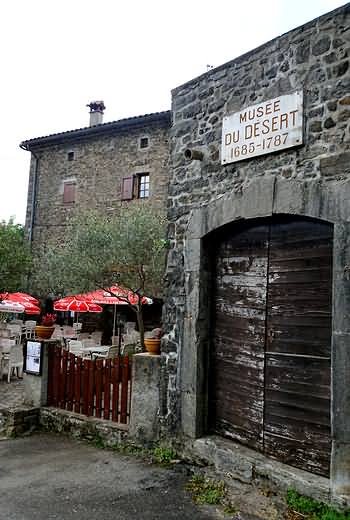Anduze in South of France - gateway between Provence and the Cévennes

Musée du Désert

Musée du Désert | ©: www.anduze-info.com
The Musée du Désert is located near the Mialet village. Here the birthplace of Roland, a Huguenot leader, was established. In the Cevennes, they were called the Camisards, (French: Camisards). They are considered to be descendants of the Waldenses, who converted to Protestantism during the 16th century. After the Edict of Nantes anno 1685 was lifted, a war of the Camisards followed, which eventually led to partisan war, known as the Cevenol War from 1702-1705. The visitors of the Musée du Désert are invited to emerge themselves into the time of 1685. The time from the underground up to the Edict in 1787. The exhibition of the Camisards and the Huguenot at the Musée du Désert is divided into the following two areas:
The historical frame of the Musée du Désert
Roland's house and the neighbouring estates form the first section of the Musée du Désert. Here, is the persecution of the Huguenots in its historical context demonstrated. The room "Claude Brousson" exhibits numerous documents for the visitors to view. Their content is in connection to the Edict of Nantes, and other exhibits concerning the history of Protestants up to the late 17th century.
The war of the Camisards between 1702-1710 stands on the premises of "Rolland et Cavalier", a bedroom and a kitchen typical of the region, creating the focal point. During the war, some 3,000 locals (Cevennes) fought under the leadership of Roland and Cavalier against 25,000 French soldiers.
The “Gathering room” is equipped with various items used for clandestine religious services. This gives you an insight what life in the underground was like. Psalm books and religious literature, which was printed abroad for the Huguenots, are exhibited in the “Room of the Bible.”
The exhibit "Antoine Court" is reminiscent of the same pastor. He convened the first clandestine synod and therefore, given the church it’s underground structure. The room "Paul Rabaut" is devoted to the end of the repression and the beginning of freedom of religion in the late 18th century.
Monuments
The second area of the Musée du Désert is divided into the spaces of the preacher, the refugees, the galley slaves, Bible studies, and prisoners. These rooms, exhibit the primary focus of the repression, which the Huguenots in France were exposed.
Whoever is on holiday in the Cevennes, and wants to know more about the recent history, this museum is highly recommended. Even the name of the institution itself becomes self-explanatory after a visit. - The Camisards and Huguenots literally had to hide in the barren land, and virtually were sent "into the desert".
[ © Copyright by www.anduze-info.com | Anduze in South of France - the gateway between Provence and the Cévennes]
to the top | Home | Sitemap | Imprint & Contact |
this page in German
©: www.anduze-info.com
© www.anduze-info.com